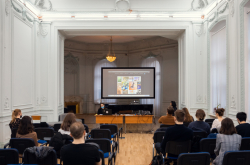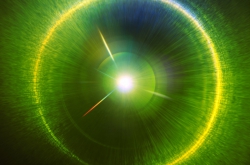Is this your first time of participating in a science conference in Russia?
It is my second time. Three years ago, I attended an event in St. Petersburg, though it focused on a different topic.
How is METANANO different from traditional conferences?
Here at METANANO, there are many students and young scientists, which is really good. The very atmosphere is homely and informal. I think this has a lot to do with Pavel Belov, the General Chair of the conference, being well-known in the scientific community. Now, he has also proved himself as a good organizer.
Are you currently collaborating with any research teams from Russia?
Not at the moment, but I don’t exclude such a possibility in the future. After moving to Germany, I’ll be getting all the more opportunities to participate in programs by different foundations. For instance, I’ve recently joined an initiative by the Russian Science Foundation (RSF) and the Deutsche Forschungsgemeinschaft (DFG). This can also become a means for launching such a collaboration.

You’re conducting a broad range of both fundamental and applied research. Tell us more about the projects you are currently part of.
On the whole, we are trying to find a way to concentrate light on a very wide spectral band, from UV to near-IR region. How can we confine it in a really small space? And finally, what is the most effective way to gather weak light and transform light energy into something else? That can be chemical energy, catalysis, electric energy, for instance, something used in solar cells, photonic switches or sensing. We are researching a wide range of issues.
When speaking about practical applications, I suppose my work has two main objectives. Firstly, we are teaching a new generation of researchers. Personally, I believe that this is a most important task that many forget about. Secondly, we are solving a wide range of applied tasks. We believe that focusing light on an ever lesser scale will allow to use fewer materials. For instance, when speaking of photovoltaics, this means that we will need less materials for producing solar panels, which will also weigh less, be more efficient, and hence cost less. If applied in the field of biology, this will increase the precision of molecule detection, which is very important for such purposes as screening. So you can say that our key focus is making things cheaper, lighter, and more responsive.
Speaking of metamaterials. It’s practically every day that we hear about yet another interesting discovery in this field in this field. In your opinion, what are the key opportunities that metamaterials can offer us in the nearest future?
The opportunities that we can make use of in the nearest future have to do with radio frequency modes, antennae, for instance. We already have antennae that are based on metamaterial technologies and can be introduced in the field of transport. A less apparent opportunity has to do with lens, i.e. such technologies as flat lens, micro chip lens and so on.

Another question: when will such inventions make their way into our daily lives? In a recent interview, Nobel Prize winner Andre Geim said that up to 70 years may pass between the making of a fundamental discovery and its implementation. Do you agree with that?
It depends. There are multiple inventions that can be introduced quite fast. Still, if that’s nanotechnologies we’re talking about, a period of 30-60 years definitely sounds real. In my opinion, the main reason for that is because you have to persuade the industry in the necessity of switching to different production methods, and you know that it now works mostly on silicone. If you want them to switch to new materials and structures, this will definitely take time.
What are the main problems that scientists will have to overcome in order to get better results? And which tasks do you set for yourself in that regard?
I believe that for now, the key issue has to do with the efficiency of transforming solar energy into electric energy, and the problems of energy transformation in general. My current tasks lie in this area, as well. As of now, we are working on improving energy transformation processes.
Stefan Maier is a professor at Ludwig Maximilian University of Munich and author of about 300 articles, as well as the book “Plasmonics: Fundamentals and Applications”. Mr. Maier was awarded the Sackler Prize in the Physical Sciences and the Paterson Medal of the Institute of Physics, and is fellow of Institute of Physics (IOP) and the Optical Society of America. In addition to research in fundamental and applied plasmonics and nanophotonics, focuses on helping students reach their utmost scientific potential. While in his group, seven postdocs obtained Marie-Skłodowska-Curie fellowships.





